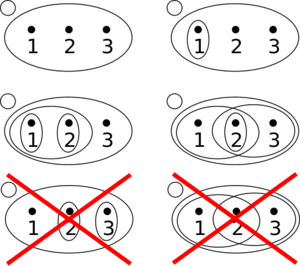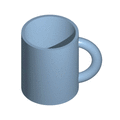Topological space (nonfiction): Difference between revisions
No edit summary |
|||
| Line 12: | Line 12: | ||
<gallery> | <gallery> | ||
File:Mug and Torus morph.gif|link=Topology (nonfiction)|[[Topology (nonfiction)|Topology]] lesson says it "never gets tired of changing from a cup to a donut and back again." | |||
</gallery> | </gallery> | ||
Latest revision as of 10:32, 6 August 2017
In topology and related branches of mathematics, a topological space may be defined as a set of points, along with a set of neighborhoods for each point, satisfying a set of axioms relating points and neighborhoods.
The definition of a topological space relies only upon set theory and is the most general notion of a mathematical space that allows for the definition of concepts such as continuity, connectedness, and convergence.
Other spaces, such as manifolds and metric spaces, are specializations of topological spaces with extra structures or constraints.
Being so general, topological spaces are a central unifying notion and appear in virtually every branch of modern mathematics.
The branch of mathematics that studies topological spaces in their own right is called point-set topology or general topology.
In the News
Topology lesson says it "never gets tired of changing from a cup to a donut and back again."
Fiction cross-reference
Nonfiction cross-reference
External links:
- Topological space @ Wikipedia

